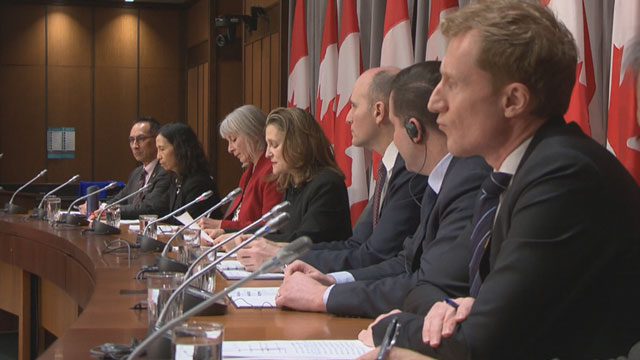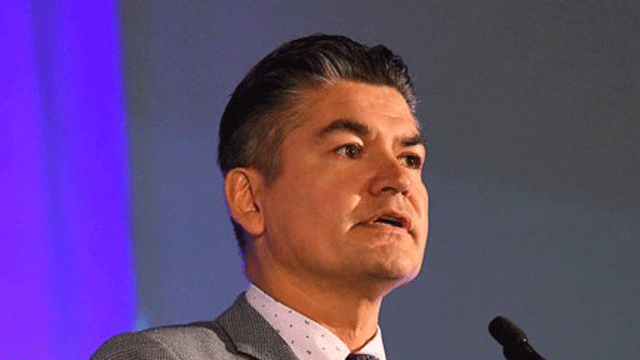
The organization that will administer a $306.8-million stimulus package for small and medium-sized Indigenous businesses says it’s still “fine tuning” the details of how that money will get to roughly 6,000 Indigenous businesses feeling the economic impacts of the coronavirus pandemic, while Ottawa has offered more information on what that assistance will look like.
The support for Indigenous businesses “will be very much along the same lines as what is accessible for non-Indigenous businesses,” said Christopher Duschenes, director general of the Economic Policy Development Branch of Indigenous Services Canada during a media briefing Wednesday.
Repayment terms are still being worked out, but businesses will be eligible for $40,000 in financial aid: $30,000 as an interest-free loan and the rest as “essentially a grant,” which they won’t need to pay back.
A “contingency fund” also exists, so businesses won’t be competing for the money.
“It will likely not be a matter of picking and choosing, but those who are deemed to need the financing will have access to that $40,000 for business,” Duschenes said.
The National Aboriginal Capital Corporations Association (NACCA) is waiting for that money to be allocated by the federal government, at which point funds will flow through NACCA to Aboriginal Financial Institutions (AFIs) that will then determine clients’ eligibility and distribute the money accordingly.
“We’re utilizing the existing programs that we deliver, so we’re not creating something new. We’re expanding something that we already have in place,” NACCA CEO Shannin Metatawabin told APTN News.
NACCA consists of 59 AFIs that are situated across the country and assists First Nations, Inuit and Metis businesses both on-reserve and off.
“We have a delivery mechanism through the AFIs. We have agreements in place and we will need to create new agreements. We will need to get the money from the government, who have their own processes in place to ensure that they are able to allocate that money. And I think they’re looking at mechanisms to ensure that they don’t make it a long process,” Metatawabin said of what NACCA is presently working on.
“I know everybody is waiting for this information, but we’re trying to make sure that it’s a program that’s going to be relevant and it’s going to be impactful and it’s not going to be another barrier.”
Priority will be given to former and existing clients of the AFI network, he added, and this includes “a vast majority” of the roughly 55,000 Indigenous businesses covering First Nations, Inuit and Metis.

(NACCA CEO Shannin Metatawabin says Indigenous businesses face difficulties accessing capital. Supplied photo)
Ottawa announced the money on April 18. Prime Minister Justin Trudeau said it “will allow Indigenous businesses to access short-term interest-free loans and non-repayable contributions so they are better positioned to make it through and rebound after this crisis.”
But Metatawabin explained that NACCA started working with ISC five weeks earlier to secure economic aid. The stimulus package for small and medium-sized Indigenous businesses came one month after Ottawa unveiled an $82-billion COVID-19 relief package that included a $305-million Indigenous Community Support Fund.
“Right as the lockdowns began we had already started having our first meetings because we knew that this was going to be an impact, and it’s taken this long to ensure that we demonstrate and go through the process of government to get this announcement. We don’t have the capital within the AFI network to provide this type of stimulus to our members,” Metatawabin explained.
Along with difficulty accessing capital, Indigenous businesses also deal with other unique challenges that make it hard to get through the coronavirus pandemic.
“We are going to be the most impacted because our communities already have faced quite a barrier to just exist and create a business, and in the conditions that we’re in – in more remote and smaller markets – this whole lockdown is really going to impact our businesses,” he said.
“A lot of our businesses are services type of businesses, and those right now are not seeing any revenue whatsoever. So that’s why this is so important to get the businesses through the crisis to ensure that they can survive at the end of it.”
Larger businesses are not eligible for this round of emergency stimulus. Metatawabin said he expects another announcement from the prime minister on that front.
“There’s a lot of large Indigenous businesses, lots of large hotels, lots of large economic development corporations, that are looking for larger amounts of capital and the government has to come through with assistance for them because they’re facing the same unique challenges.”
In a letter addressed to Finance Minister Bill Morneau, Conservative MP Gary Vidal, the critic for ISC, said that for-profit limited partnerships owned by First Nations were excluded from the government’s emergency wage subsidy program for businesses.
“I’m sure it was not your intention to exclude First Nations businesses from government support, so I look forward to seeing you take the necessary steps, to include these limited partnerships in the Emergency Wage Subsidy Program,” the letter said.
Duschenes told reporters those issues are “actively under discussion” and there could be more announcements coming to ensure “there are not businesses that fall through the cracks.”
Economic support for First Nations, Inuit and Metis was also a subject of debate as the federal Standing Committee on Health met via teleconference to discuss Ottawa’s response to COVID-19 in Indigenous communities.
Grand Chief Jerry Daniels, whose Southern Chiefs’ Organization represents 34 Anishinaabe and Dakota communities in Manitoba, noted that well over $100 billion has been allocated to help Canada deal with the pandemic.
“Only $621 million is earmarked for Indigenous communities,” he pointed out.
“The 2016 census reported that Indigenous peoples accounted for 4.9 per cent of the national population, yet Indigenous people are receiving just over 0.5 per cent of the relief funds allocated by Ottawa. This is clearly disproportionate and First Nations are still left managing poverty.”
“We ask that the funding for the Indigenous Community Support Fund be increased to equitably reflect the First Nations population and realities, realities created by many consecutive Canadian governments,” Daniels said.
Metatawabin called the support for businesses “a good beginning.” But he also pointed out more could be done.
“We’re trying to manage expectations. This is the first announcement for Indigenous business. It’s an important announcement for the AFI network and their clients, but the government still has to come through to ensure that all the additional Indigenous businesses have some options for stimulus so that they can get through this challenge.”










